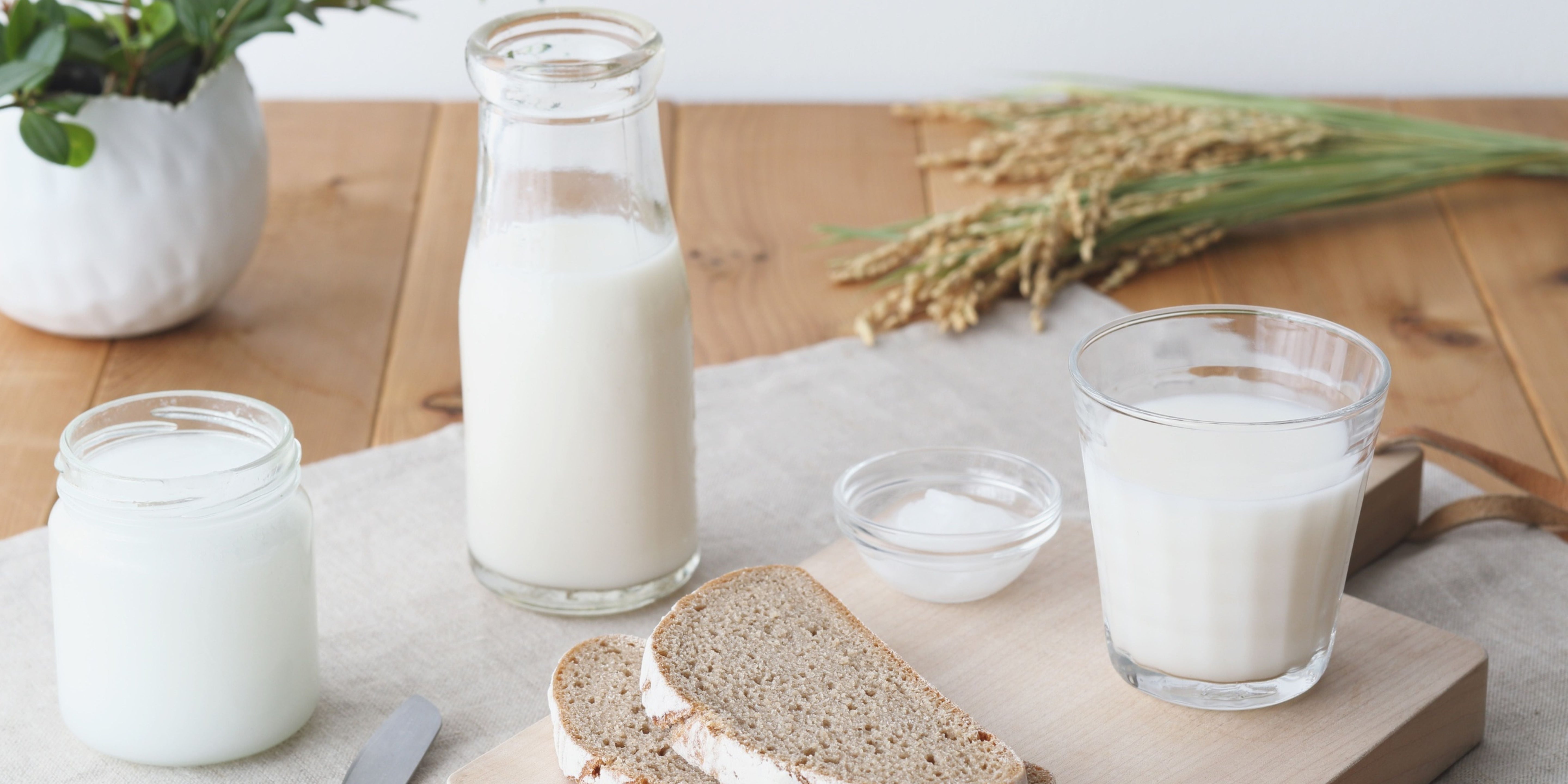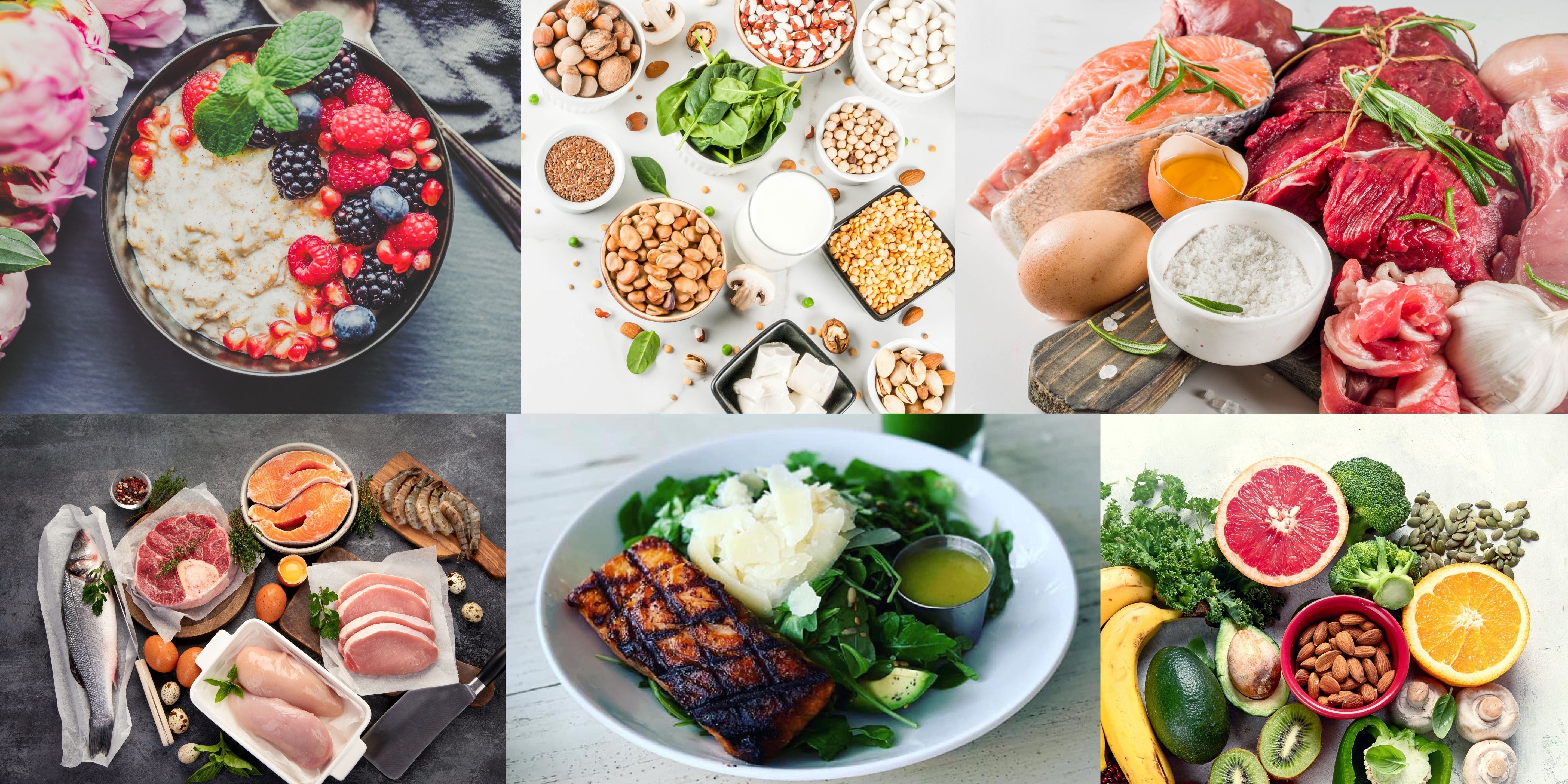For the most part, the milk of today is not the milk of our ancestors. The majority of milk jugs lining the average grocery store shelves are mass-produced from large CAFOs (Concentrated Animal Feeding Operations) where cows live out their lives indoors with limited exercise and sunlight. These poor cows are often fed more grains than their stomachs can handle, leading to the common use of antibiotics as a preventative from them getting sick. Growth hormones are often used to increase milk production.
Due to the way milk is heavily processed, from unnatural conditions in a grassless barn to ultra-pasteurization for a long lasting shelf life, milk is a food that is off the table for many. When we buy this milk, we find it hard to digest and it often makes us sick too. The consumption of it can cause gas, bloating, and an aching stomach. What was once a nourishing food has been heavily tainted by modern means. However, milk alternatives (oat milk, soy milk, almond milk, etc.), have their own problems and lack the sustaining qualities of healthy milk from healthy animals that comes with plenty of minerals, fat-soluble vitamins, protein and more.
So, if you have had to cut out dairy from your life, but miss it, is there a way to get it back? Who doesn’t love the creamy, richness of real dairy? Stick with me here and we will go over some tips on how to get the goodness of dairy to work better for you.
5 Tips to Improve the Digestibility of Milk
1) Consume lactobacillus variety of probiotics
Many are coming to realize the importance of the gut microbiome (aka the balance of good and bad bacteria in your gut). Bacteria in our bodies outnumber our human cells, and when they are the right species/type, bacteria (as probiotics) can actually be beneficial for us in many ways. One of the ways is that certain strains of bacteria can make B-vitamins and vitamin K from the food we eat. They can even manufacture butyric acid, a nourishing type of fat for the intestinal lining, from fiber. But, most relevant to this discussion, lactobacillus probiotics in the gut work to break down lactose, helping to reduce digestive issues from it.

2) Take lactase enzymes with milk
A short cut instead of taking lactobacillus probiotics is to take lactase enzymes with milk, if lactose is part of the problem. Some of the other options suggested will be better in the long run though, as you will transform your gut and body to have a healthier terrain for better resilience.

3) Ferment dairy for easier digestion
Consuming fermented milk products like yogurt, sour cream, and kefir, can be a great way to improve tolerance to dairy. When dairy is fermented, it will amplify the numbers of the lactobacillus variety of probiotics, including lactobacillus acidophilus. Fermenting dairy yourself is the best way to ensure a potent, nourishing food, and there are many different companies nowadays, whether local (like Oly Cultures in our neck of the woods) or Cultures for Health online, who offer starter cultures.
When fermenting your own milk and consuming it, start slow, as it is a powerful food. Maybe a teaspoon a day and work up over time. Kefir is a mixture of probiotics and yeast in these little squishy, cauliflower-shaped whitish/yellowish grains. You basically put the milk in a jar with the kefir grains and leave it to ferment for 24-48 hours. You can’t do it with ultra-pasteurized milk, but you can do it with raw or pasteurized. Many of our customers have been making their own goat milk kefir with our rehydrated milk powder and kefir grains. Kefir is also rich in enzymes, helpful for digestion.
Other fermented foods like sauerkraut, can also be a source of lactobacillus probiotics. When you ferment a food, it breaks down the sugars, helping to reduce them, and pre-digests the protein by breaking the peptides into smaller amino acids, reducing the work your body has to do in digestion, and in fact enhancing digestion with the probiotics and enzymes.
We offer two types of fermented proteins, Caprotein (with vanilla flavoring, no sweetener), and Clean Whole Protein + fermented Protein, with no flavor or sweetener, to enhance the digestion of the protein for those who could use it.
 4) Choose Quality Milk
4) Choose Quality Milk
In the opening I mentioned many ways conventional dairy goes wrong: antibiotics, hormones, and unhealthy animals. Some cows are also fed gmo-corn and soy, which further takes a toll on their gut health and therefore the quality of the milk they produce. If they don’t have the right nutrition for their bodies and are lacking minerals from their diet, the milk will be devoid of quality nutrients.
You want to look for animals, whether cows, goats or sheep, that are raised on pasture and get the opportunity to graze lots of green grass. Practicing rotational grazing is also beneficial, as it helps limit any bugs that the animals may pick up, gives them fresh food, and helps the pastures recover to grow more nourishing food. Animals raised in sunlight will be manufacturing more vitamin D, making their milk vitamin D rich, vs. cows raised in barns in artificial light.
One of the other factors is A1 casein vs. A2 casein. A lot of the milk in the stores, unless stated otherwise, are A1 casein protein, which is more inflammatory and reactive. Something about the way cows have been bred over time has produced this, but there are still certain breeds of cows that produce A2, which is much better tolerated.

5) Try Goat Milk
Goat milk is an A2 milk and is generally much better tolerated for people, even those who often have problems digesting cow's milk. From a growth cycle standpoint, baby goats are born about 7-9 lbs and grow to be 100+ lbs, more similar to humans, whereas calves are born around 100 lbs, and grow to be over 1000 lbs. The difference in growth requires different energy demands and needs. Goat milk is also easier to digest, as it has smaller fat and protein molecules, is more alkaline and is higher in potassium. Goat milk is also higher in medium chain trigylcerides (MCTs) at about 30-35% of the fat, vs. around 15-20% in cow's milk.
Goat milk does have less lactose, about 10% less, which isn't necessarily significant if someone truly has lactose intolerance. However, those who do better with goat milk may find that it isn't a lactose intolerance issue, but a protein issue, and they do better with the A2 protein of goat's milk.
Have you tried goat's milk? Whether that you want to try ghee (the best tolerated out of all dairy products for sensitive people), straight milk, or a goat protein, we have a number of options for you. Your digestive system will thank you.







Share:
How Our Electrolytes Stack Up
Hydration Options for the Summer